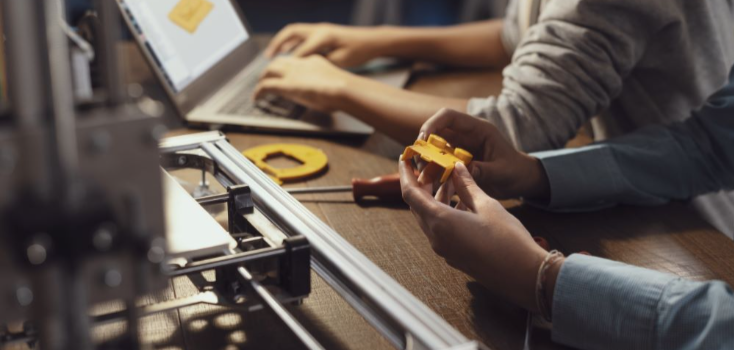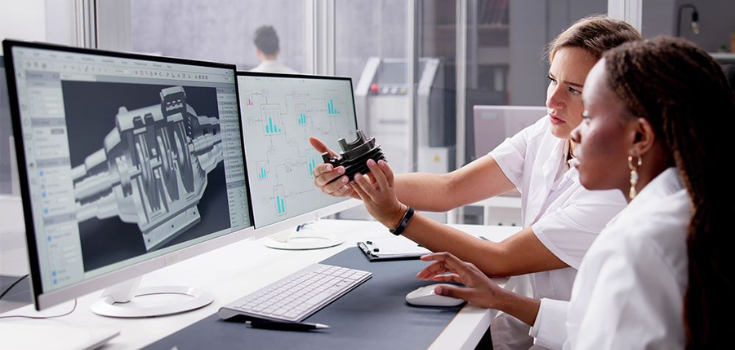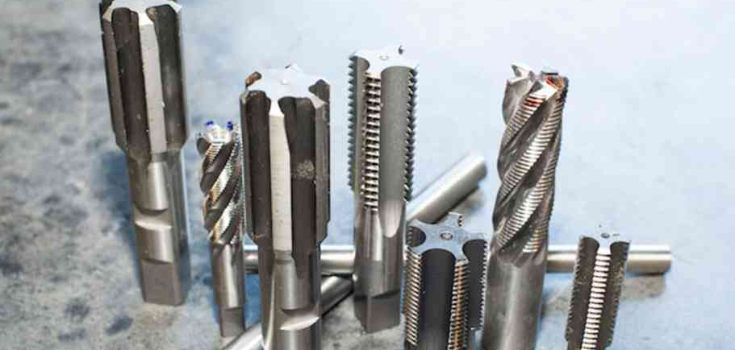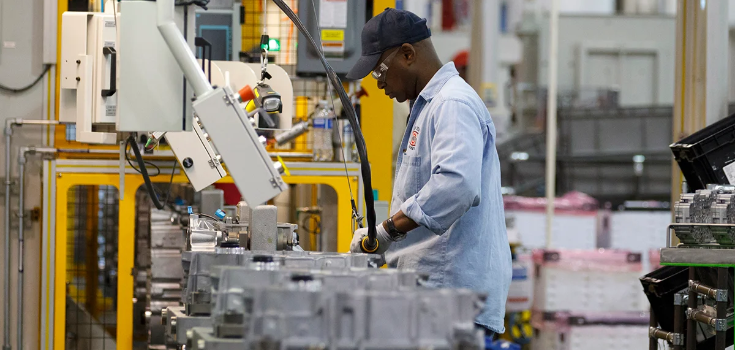Making accurate metal parts using CNC machines can be difficult, especially when the parts lose their shape during the process. Bending, warping, or twisting can happen for several reasons. These issues can lead to wasted time and materials.
In this blog, I’ll share 6 tips to avoid deformation for CNC machining metal parts. These tips are easy to follow and can help you get better results.
Reason for the Deformation of Machined Metal Parts
Some of the main causes of deformation of CNC-machined metal parts are explained below:
Material and Design

Softer metals or metals with a loose grain structure are easier to deform than harder, stronger metals. The shape of the part also matters. Parts with sharp corners, thin walls, or long, flat sections can bend more easily than parts with smooth curves or thicker areas.
Even the way you design the parts in your CAD file can cause problems. If the part is not balanced or has an odd shape, it’s more likely to deform when you machine it.
Clamping the Workpiece
Deformation often happens when the part isn’t clamped the right way. If you don’t secure the metal part properly during machining, it can shift, bend, or lose its shape. That’s why you need to use the right fixtures and clamps to hold the part steady while you machine it.
Processo de maquinagem
How tight the tolerances are and how the part was made all affect how much the part might deform. Different materials react in different ways, so you need to think carefully about which process you will use.
6 Tips to Avoid Deformation for CNC Machining Metal Parts
Now, let me share these helpful tips so you can avoid deformation in your CNC-machined metal parts.
Optimize Material Selection and Preparation

Make sure the material is clean and dry before you start. Dirt, oil, or moisture can affect how the machine cuts and may lead to errors and defects.
Using stronger materials or protective coatings can also help a lot. For example, harder metals or powder coating can make your parts more resistant to wear and less likely to change shape.
Reduce the Internal Stress of the Metal Parts
Avoid stress during machining. For example, if the cutting tool is not lined up correctly with the workpiece, it can cut unevenly. This puts extra pressure on the metal and may cause it to bend. To fix this, make sure your cutting tool is sharp, high-quality, and properly aligned before you start.
Another one is residual stress, which stays in the part even after machining is done. This can happen during cooling. For example, if you’re machining aluminum that was previously molded.
To prevent residual stress, you can relieve it after machining by using methods like annealing or shot peening; these steps help the part keep its shape.
Optimize the Ability of Cutting Tools
Use strong, high-performance tool materials like carbide, high-speed steel (HSS), or ceramics. These last longer, stay sharp, and help your machine work better, even if they cost a little more.
Always use the right coolant when machining. It keeps your tools and parts from overheating. Some materials don’t soak up coolant, so they heat up fast from friction. This can cause your parts to bend or change shape.
Check your tools often; if they’re worn out, clean or sharpen them. Take care of your CNC machine, keep it clean, and do regular maintenance so it runs smoothly and lasts longer.
Improve the Structure of Cutting Tools

If you’re making custom parts with Swiss machines or other CNC tools, you need tool bits made for the job. The shape and design of your tool bit can make a big difference in how your finished part turns out.
When cutting sheet metal, the cutting tool can sometimes bend or deform. This usually happens when the tool is not made from the right material or has not been heat-treated properly. The easiest way to prevent this is to use a custom tool made for that specific task.
The structure of your tool is important. It needs to be strong enough to handle the pressure while cutting. If it’s not, the tool will bend and won’t cut the metal evenly.
Use Proper Workholding & Clamping
Warping often happens when the workpiece is not held tightly enough. If it moves while the machine is working, your part may come out bent or uneven. This can ruin the final result. To avoid this, always choose the right clamping method for the material you’re working with and the shape you want.
One of the easiest-to-use tools is a bar clamp. It’s usually made of steel or aluminum and can be adjusted to hold different sizes of workpieces. You attach it with screws, bolts, or built-in clamps to keep the part steady during maquinagem.
Optimize the Production Process

You can avoid deformation by using methods like CNC machining, additive manufacturing, and rapid prototyping.
CNC machining uses computer-controlled tools to shape your parts with high accuracy. This keeps the part dimensions correct and lowers the chance of deformation.
But be careful, because if you use a feed rate that’s too high, it can wear out your tools and create stress inside the metal. Fixing that stress with heat treatment can take extra time, even for small batches.
You can also try rapid prototyping. This means making a test version of your part using a CAD file before full production. It lets you check the size, shape, and material to make sure everything works well and won’t deform during machining.
For low-volume jobs, you can also use 3D printing. It’s especially useful for plastic parts and is becoming more popular for making metal parts too. Right now, it can take longer than CNC machining, but it’s great for making special custom shapes and saving time on design changes.
High-Quality Precision CNC Machining Services with DEK
At DEK, we focus on consistent, reliable support throughout your manufacturing process. Our team ensures smooth operations from start to finish. If you have any questions or need a quote, feel free to reach out.
Conclusão
To reduce the chances of deformation in your metal parts, start by selecting the right tool for the job. Use a slower feed rate to limit stress on the material during machining.
Make sure your cutting tools are sharp and choose a cutting speed that’s not too fast or too slow. It also helps to check each part for any signs of bending or warping before finishing.
By following these simple tips, you can improve the quality of your CNC-machined parts and avoid common issues.
